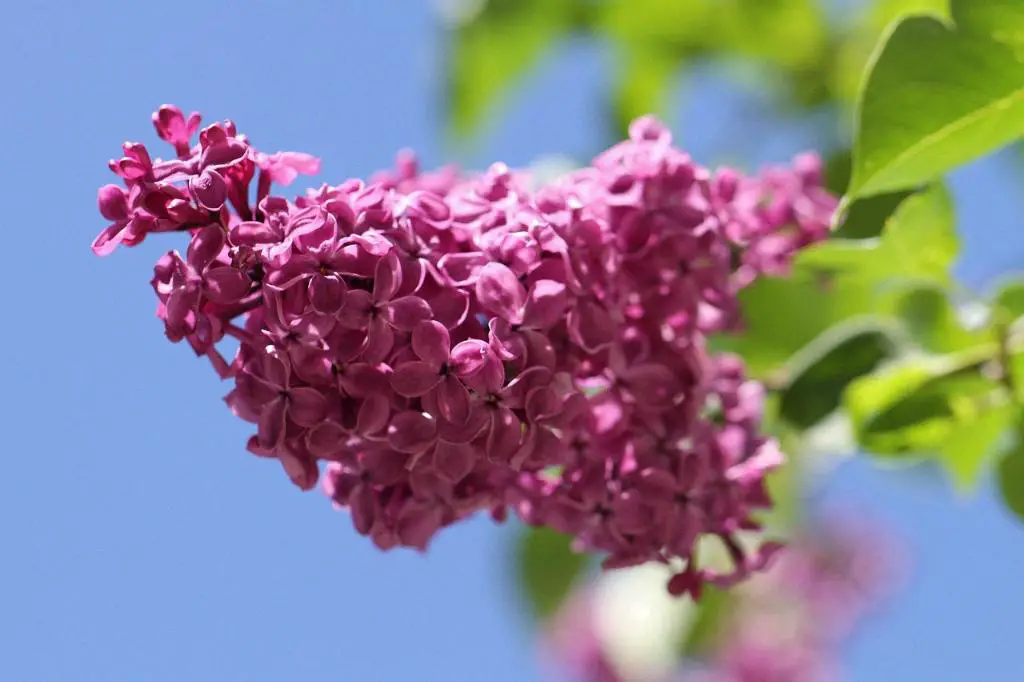The allure of lilac blossoms isn’t hard to understand once you’ve had the chance to witness them in their full glory during the bloom season. Streets, gardens, and parks are transformed as the lilac bushes proudly showcase their vibrant colors and the air fills with their sweet, heady aroma. This magical time typically occurs in late spring, offering a visual and olfactory feast that heralds the end of chilly weather. The beauty of lilacs isn’t merely their appearance but also their brief blooming period, which makes them all the more special. People often flock to lilac-rich regions just to witness this short-lived spectacle, capturing the essence of spring with every sight and sniff.
Unveiling the Fragrance: What Makes Lilac Blossoms Unique?
Lilac blossoms are renowned for their distinctive fragrance, which can vary subtly between species. The most common lilac, Syringa vulgaris, emits a strong, sweet scent that many describe as quintessential of the flower. This unique fragrance is due not only to the plant’s genetics but also to its terpenes—volatile organic compounds that produce intense aromas. Interestingly, the smell of lilac often brings a sense of nostalgia, whisking one away to fond memories of past springs. For those looking to capture this aroma, lilac essential oils and scented candles are popular, allowing its unmistakable fragrance to linger in homes year-round.
Lilac Blossoms in Gardening: Best Practices for Thriving Plants
Successfully growing lilac bushes requires some basic know-how and gardening skills. Lilacs thrive in well-draining soil with plenty of sunlight; they prefer about 6 hours of direct sun daily. Soil pH should be near neutral, although lilacs can tolerate slightly alkaline conditions. Ensuring good air circulation around the plants will help prevent disease. Regular pruning after blooming not only helps shape the bush but also encourages more prolific blooms the following year. A common challenge is lilac blight, which can be mitigated by avoiding overhead watering and removing affected areas promptly.
Celebrating Lilac Blossom Festivals Around the World
From the Rochester Lilac Festival in New York to the Mackinac Island Lilac Festival in Michigan, lilac festivals are a springtime highlight in many communities globally. These festivals often feature parades, music performances, craft fairs, and, most importantly, garden tours showcasing the finest blooms. They provide a perfect opportunity not only to admire lilac varieties but also to learn from seasoned gardeners. These events celebrate the lilac’s role in local cultures and herald the arrival of spring with a communal spirit of rejuvenation and new beginnings.
Culinary Delights: Cooking and Crafting with Lilac Blossoms
Did you know lilac blossoms are edible? Their floral, slightly citrusy flavor makes them a fantastic addition to a variety of dishes. Lilac sugar, syrups, or infused honey can be made from the flowers to lend a subtle flavor to teas, pastries, and desserts. Savory applications include tossing fresh lilac blossoms into salads for a splash of color and a hint of lemony taste. When cooking with lilacs, ensure they are free of pesticides and rinse them gently to maintain their delicate blooms.
Lilac Blossom DIY: Creating Natural Beauty Products at Home
Imagine harnessing the soothing fragrance and beneficial properties of lilacs in your skincare regime. Home-made lilac-infused oils can be a therapeutic addition to bath routines, potentially offering anti-inflammatory and calming benefits. Lilac water, made from steeping the flowers, can serve as a gentle facial toner or a refreshing spritz throughout the day. Crafting these products at home allows for customization to one’s skin type and preferences, providing a deeply personal touch to beauty care.
The Symbolism and Cultural Significance of Lilac Blossoms
Lilacs are rich with symbolism and hold various meanings across cultures. In Victorian times, they symbolized young love and innocence. In Eastern Europe, they are often associated with Easter due to their typical blooming period around the holiday. The lilac is also the state flower of New Hampshire, representing the hardy character of the Granite State’s people. This multifaceted flower not only appeals to the senses but also resonates on a deeper, sentimental level, often being used in festivals and art to evoke emotion and signify love and youth.
Top Tips for Photographing Lilac Blossoms in Full Bloom
Capturing the ethereal beauty of lilac blossoms can be as rewarding as it is challenging. The best time for photography is often in the early morning or late afternoon when the light is softest. Using a macro lens will help capture the intricate details of the petals, while a wider lens can capture the sweeping beauty of a lilac bush in full bloom. Experiment with different angles and depths to showcase the blossoms against the sky or other natural backdrops, making sure the delicate colors are vividly portrayed in your photos.
How to Choose and Care for Lilac Blossom Bouquets
Bringing fresh lilac blossoms indoors extends the joy of their season. When choosing lilac bouquets, look for freshly cut stems with vibrant, perky blooms. Once home, snip the ends of the stems diagonally and place them in cool, clean water. Changing the water daily and trimming the stems slightly each time can help prolong their life. Keep the bouquet away from direct sunlight to preserve the colors and fragrance of the lilacs as long as possible.
The Future of Lilac Blossoms: Conservation and Environmental Impact
As beautiful as lilac blossoms are, they face threats from habitat loss, climate change, and disease like many other plants. Conservation efforts are crucial to protect these treasures for future generations. Initiatives include breeding resistant varieties and maintaining lilac collections at botanical gardens and arboretums, ensuring that these plants do not vanish from our gardens or landscapes. Additionally, supporting local nurseries that grow lilacs sustainably can contribute to the overall effort of preserving both the beauty and biodiversity of our planet.

